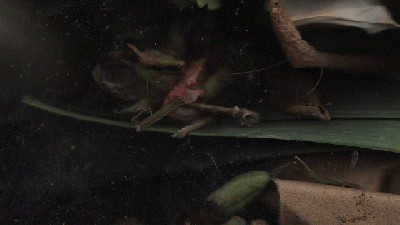The world of the subsoil is a fascinating place. Our whole ecosystem depends on its variety of fungus, bacteria and detritivore creatures that break down and decay dead matter and provide the nutrients to sustain plants that bring in the energy from the sun.
It’s easy enough to study what is happening beneath the surface, just reach for a trowel. But of course, that’s an imperfect technique, for it only gives a picture of a world you have destroyed, and then at best only a snapshot.

What if you could image underground, take pictures and video of the decay process and the creatures that are its engine? [Josh Williams] was curious how this could be achieved, so after early experiments with buried webcams proved unimpressive he created the Rhizotron. A flatbed scanner waterproofed for burial with plenty of silicone, and driven by a Raspberry Pi. The result was particularly successful, and though he has lost several scanners to water ingress he has collected some impressive imagery which he has posted on the project’s blog. Below the break we’ve included one of his videos taken with the scanner in a compost bucket, in which you can see decomposition aplenty, mating millipedes, spreading fungal hyphae and much more.
It’s something of a surprise to see that this is the first subsoil imaging project we’ve featured here at Hackaday. We’ve had plenty of moisture sensors, but no pictures. It’s not the first flatbed scanner project though, we’ve featured at least one camera using one.















I like it. Another project to add to my ‘must do’ list. Pretty cool videos!
Very nice, he could integrate this into a real working compost for dual functionality.
What an extraordinarily cool project you can do with kids. Will keep that one in mind for later :-)
this is amazing, i am surprised how well this works, i might have to try it once i find a sacrifice for the project.
Brilliant idea, but there has to be a better way to encapsulate the scanner. Surely it’s depth of field is enough to have a perspex box that you slide the scanner into?
It would be fascinating to see the long term changes in soil over the yearly cycle.
Dan, thanks and great comments! I’m using the cheaper CIS based scanners, which means anything more than ~1 or 2mm off the scanning platter are out of focus. There’s a pretty good article on this here: http://www.microscopy-uk.org.uk/mag/artjan13/dw-scanner-type.html
CCD scanners will work much better with objects further away (9+mm), but come at a cost of bulk, higher power, and size. Not a huge issue, but one I’ve just avoided so far. I love your idea of being able to slide it into a more durable enclosure.
CID Bio-Science is a company that makes cylindrical soil scanners, a much higher quality enclosure version of what I’ve been playing with. Intriguing, but incredible expensive.
A really fascinating project!
Regarding protection against water: How about using a small membrane air pump like those for aquariums? I think even a small overpressure inside the scanner should prevent any water from getting inside.
Never thought of it Alex!
I think (not 100%) that the first thing to go wrong involves the gearing/mechanism to move the scanning element due o either:
– Pressure from soil contorting the scanner body
– Gears wearing down after ~15,000+ scans.
A friend of mine at a local makerspace has mentioned adding a half-cylinder backing to the opposite side of the scanner to alleviate most of the pressure and distortion possibilities.
It’s an ingenious use of an old scanner, but if you’re building them from scratch, why wouldn’t a normal camera be better? With a flash or light or whatever, set back in a transparent box. Does the scanner give extremely high res? Is it cheaper? Is close focus important? Basically, “why is a scanner better than a camera?”
Greenaum, awesome question : ) I had difficulty getting good even lighting underground with traditional cameras, most of my lighting attempts resulted in significant glare/reflection. At some point I would like to try again!
Scanners do provide a very high resolution, though I’m barely taking advantage of it (usually scanning at 300 or 600 DPI).
It would be nice to be able to focus on objects a little further away, but once the soil has compacted against the scanner platter there’s not much to see more than a couple mm out.
One of the main advantages to using a camera would be less moving parts and (hopefully) quicker imaging times. It takes about 10-15 seconds to capture a full ~8×11 inch image with a scanner, and another ~15 seconds to process it. A camera would be much quicker.
Don’t eat dirt!
why not just use a transparent box and put the scanner up against that?